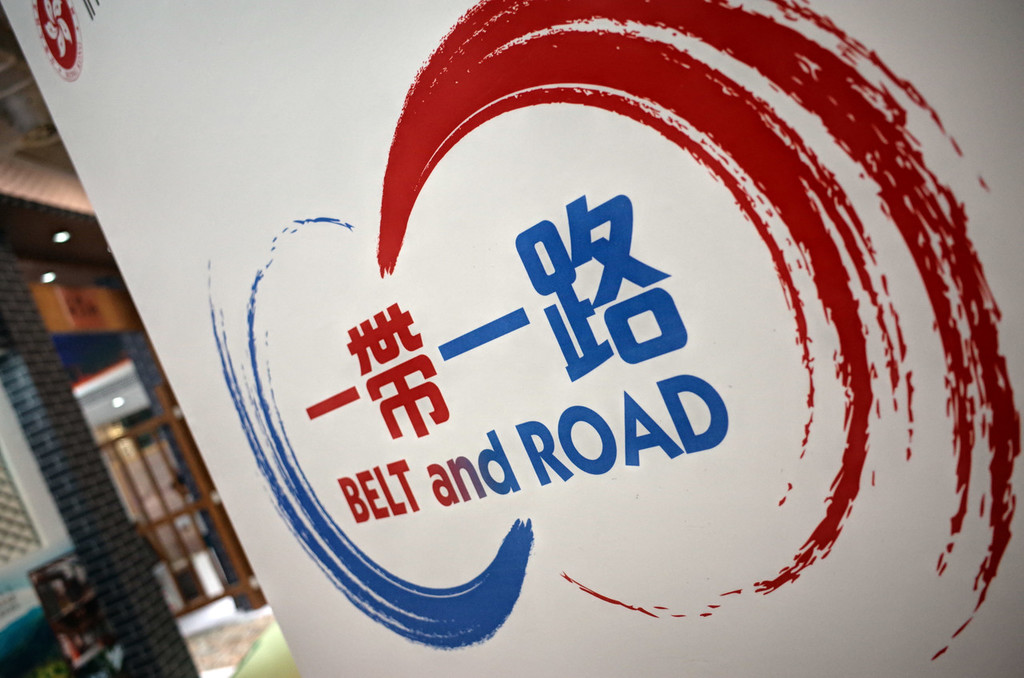Multinationals embrace cooperation opportunities under Belt and Road Initiative


BEIJING -- From manufacturers and lenders to consulting service providers, it's not uncommon to see multinational corporations participating in Belt and Road Initiative (BRI) projects. With global ambitions, many of them have embraced the tailwind produced by the BRI to expand their presence and navigate business landscapes across the world.
With the trial run of Egypt's first electrified light rail line (LRT) last year, more than 180 escalators and elevators provided by American multinational Otis Worldwide Corporation for the project were put into operation.
The LRT was one of the major BRI projects that saw participation from Otis in recent years. The multinational also supplied about 50 elevators and escalators for one of the tallest building in East Africa -- the new headquarters of the Commercial Bank of Ethiopia inaugurated last year, among other projects.
"Over the years, Otis has been deeply involved in BRI projects," said Sally Loh, president of Otis China. The company has provided vertical transport solutions and dispatched technical teams to support elevator installation for many signature projects, she noted.
"By actively engaging in these projects, Otis has fully leveraged its advantages of being a global brand and manufacturing in China to support infrastructure construction and smart city development and contribute to regional prosperity," she said.
As one of the world's major financial institutions, Deutsche Bank has borne witness to multinationals' participation in BRI projects.
"We see cases where multinationals co-develop renewable energy projects with Chinese players in the Middle East, and occasions where multinationals appear in the supply chain of BRI projects," said Peter Qiu, president of Deutsche Bank (China) Co Ltd.
Third-party market cooperation opportunities are appealing to multinational corporations, Qiu added.
The German lender has been engaged in several BRI projects, including Sinosure's guaranteed syndication for China Harbor's infrastructure project in Jamaica and trade services for Chinese solar projects in Saudi Arabia.
Having a global network of professional firms providing audit, tax and advisory services, KPMG has set up offices in more than 90 percent of BRI participating countries and regions, and will continue to scale up services for BRI-related investment and trade activities, said Jiang Liqin, head of clients and markets for KPMG China.
Advancing the BRI will bring huge investment and development opportunities for local businesses cooperating with Chinese enterprises to improve their research, technology and application capabilities, Jiang added.
Multinationals play an important role in facilitating infrastructure connectivity, smoothening trade and promoting financial integration under the BRI, which in turn provides huge business opportunities for them, said Liu Nanxing, an expert on international cooperation at the National Development and Reform Commission (NDRC).
"BRI cooperation has created enormous demand for products, investment and economic cooperation in various fields such as infrastructure construction," he noted. "It has offered multinationals new partnerships and supply orders, and increased needs for their services."
Many multinational companies pay great attention to the BRI and make it one of the key factors to be considered in their global layout, in a bid to strengthen cooperation with various parties and broaden the space for development, he said.
According to a white paper on BRI cooperation released by China's State Council Information Office, countries and businesses are encouraged to engage through various forms such as bilateral cooperation, third-party market cooperation and multilateral cooperation, thereby creating synergy for development.
By joining third-party market cooperation, enterprises from different countries can work together to carry out projects, which can reduce the risk of undertaking projects on their own, especially given the large scale of some BRI projects, said Liu.
The BRI is not only attractive to multinational giants, but also for foreign-funded small and medium-sized companies, which could enter overseas markets through the BRI to boost international development, Liu added.
Since the BRI was proposed in 2013, over 3,000 cooperation projects have been launched, involving close to $1 trillion of investment, creating an array of national landmarks, livelihood projects, and milestones of cooperation.
The Chinese government has been clear that it is open to multinational companies taking part in BRI projects, and for those willing to engage, it offers some interesting opportunities since multinationals and Chinese firms have complementary contributions to make, said Carl F. Fey, Professor of Strategy at BI Norwegian Business School.
He said multinationals can lend international experience to the projects as well as technology and strong brand names, while they can benefit from taking part in such projects by obtaining additional business, especially given the sluggish global economy.
Multinationals are both a driving force and beneficiaries of globalization, which now faces challenges and calls for transformation, while BRI cooperation is a major contributor to the sound development of globalization, said Liu from the NDRC.
Looking forward, he believes that the BRI, by connecting broad regions with economic vitality and potentials, will shape new growth centers for the world economy, help partner countries advance modernization, and propel global economic recovery.
"This process will generate even more opportunities for both partner countries and multinational companies," he said.



































